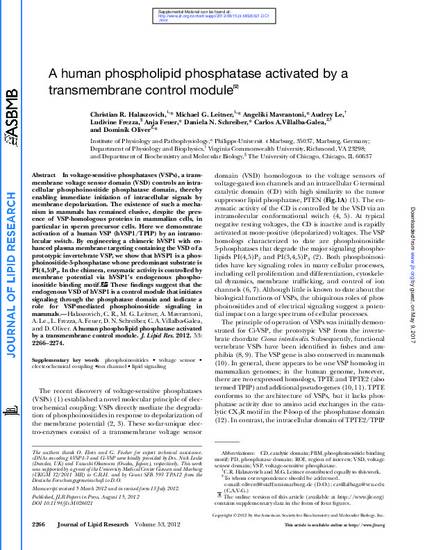
In voltage-sensitive phosphatases (VSPs), a transmembrane voltage sensor domain (VSD) controls an intracellular phosphoinositide phosphatase domain, thereby enabling immediate initiation of intracellular signals by membrane depolarization. The existence of such a mechanism in mammals has remained elusive, despite the presence of VSP-homologous proteins in mammalian cells, in particular in sperm precursor cells. Here we demonstrate activation of a human VSP (hVSP1/TPIP) by an intramolecular switch. By engineering a chimeric hVSP1 with enhanced plasma membrane targeting containing the VSD of a prototypic invertebrate VSP, we show that hVSP1 is a phosphoinositide-5-phosphatase whose predominant substrate is PI(4,5)P(2). In the chimera, enzymatic activity is controlled by membrane potential via hVSP1's endogenous phosphoinositide binding motif. These findings suggest that the endogenous VSD of hVSP1 is a control module that initiates signaling through the phosphatase domain and indicate a role for VSP-mediated phosphoinositide signaling in mammals.
Available at: http://works.bepress.com/carlos-villalba-galea/53/
